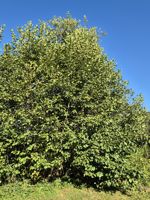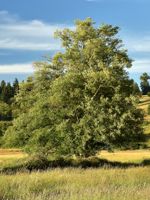Mon-Fri 9am - 5pm Mountain time
Mountain Alder vs Red Alder
Alnus incana subsp. tenuifolia
Alnus rubra
CUSTOM GROW
CUSTOM GROW
Mountain Alder is a native cold-hardy shrub or small tree often found along streams and in moist forested habitats. Its nitrogen-fixing ability enriches soils and supports surrounding vegetation, while its extensive root system helps stabilize streambanks and slopes. The fast growth rate allows it to establish quickly on disturbed sites, making it especially valuable in reclamation, restoration, and erosion control projects.
Often forming dense thickets, Mountain Alder enhances habitat quality in riparian and upland areas. It provides food and cover for various wildlife, including birds and small mammals. Recognized as an important species for soil and water conservation, it is well suited for riparian planting, naturalization, and ecological restoration.
Note: We use Sitka Alder for Alnus incana subsp. tenuifolia. This species is also known by many other common names, including Grey Alder, River Alder, and others. Please confirm the scientific name to ensure you are ordering the correct plant.
Red Alder is a fast-growing deciduous tree native to western North America. Through its nitrogen-fixing roots and nitrogen-rich leaf litter, Red Alder improves soil fertility and supports the growth of surrounding plants. This makes it especially valuable on disturbed sites following logging, construction, or fire. A classic pioneer species, it often colonizes bare ground and enhances conditions for longer-lived conifers to follow.
Red Alder stabilizes soils on streambanks and disturbed slopes, reducing erosion and aiding restoration. It also supports wildlife: birds and small mammals eat the seeds and buds, deer and elk browse the foliage, and bees are drawn to the pollen-rich catkins in spring.
Red Alder also has commercial importance, with its strong yet workable wood widely used for furniture, cabinetry, veneer, and pulp. The tree takes its name from the rusty-red color the bark turns when cut or bruised.

